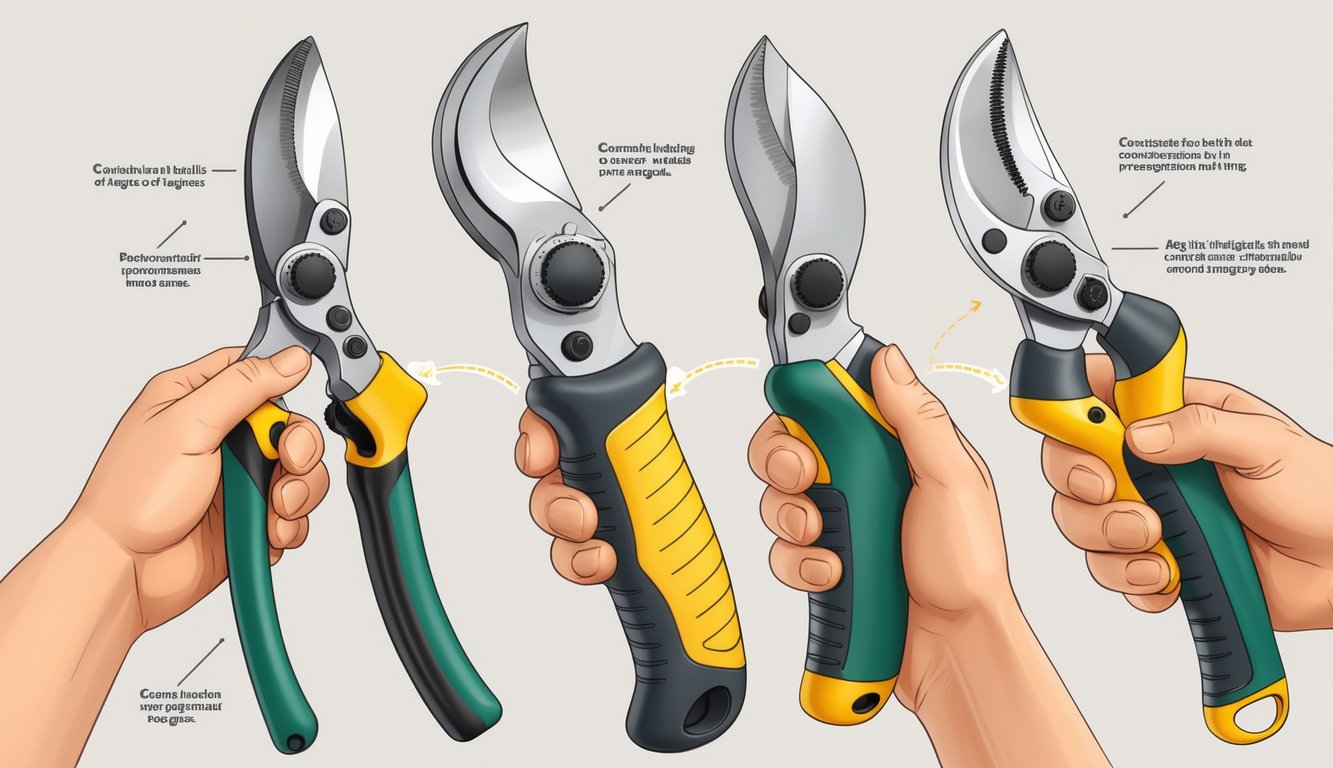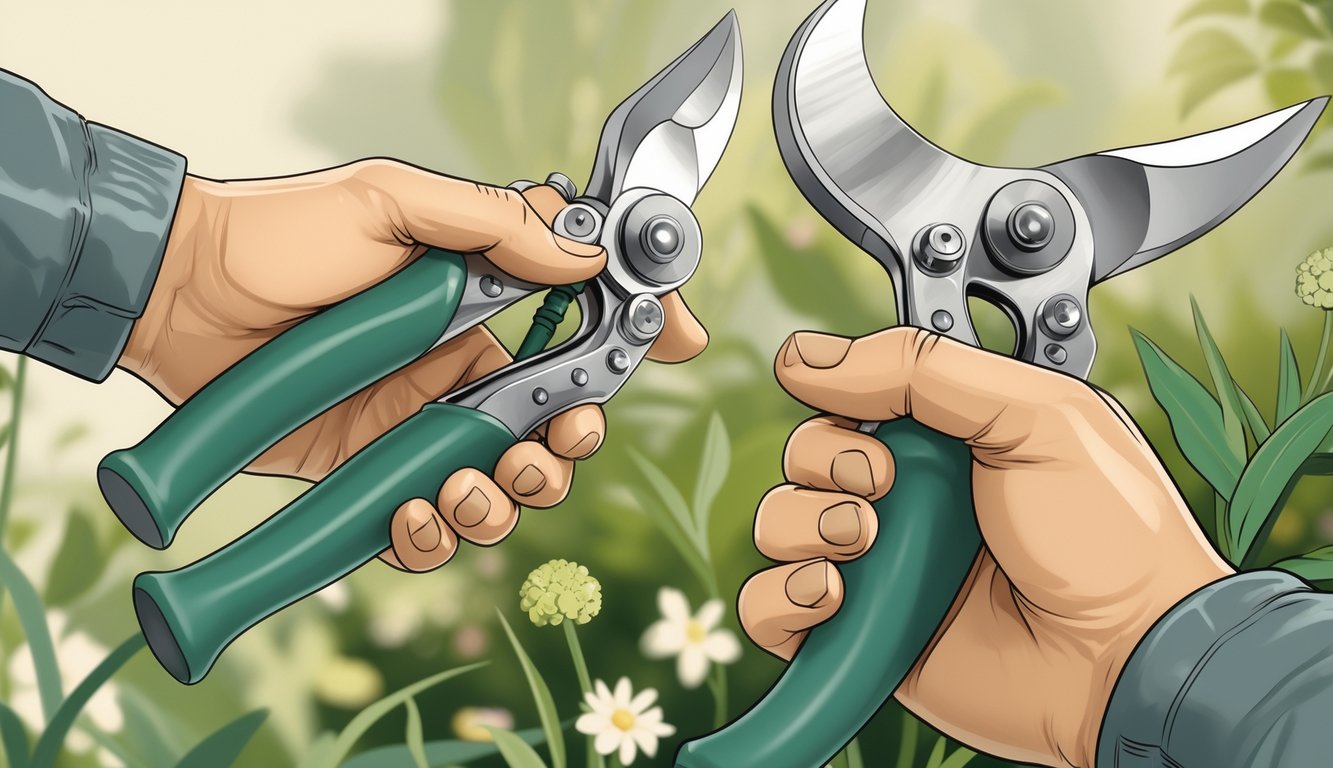
How Ergonomic Handles Improve Gardening Experience

Blisters. Every time I grab those old, bare-metal pruners, I get them. I blame the fake “ergonomic” handles. Real ergonomic grips? Suddenly, no wrist pain. Two-hour pruning marathons don’t feel like punishment. Everyone talks about “reduced hand fatigue” like it’s magic, but it’s just a grip that doesn’t crush your bones.
Reducing Fatigue During Long Sessions
After half an hour chopping thick stems, my fingers used to go numb. I saw a stat online: 68% of gardeners felt less ache with cushioned, contoured handles (University Health Services, 2024). I didn’t buy it until I tried Felco F6s. Carol next door loves her angled handles—less wrist torque, even on raspberries. I get it now.
Wide, padded handles aren’t a huge change at first, but after a hundred cuts, your palm isn’t on fire. Line up four pruners—plain metal, soft grip, rotating, wood—and you’ll feel the difference in minutes. Prefer tools that don’t fly out of your hand when wet? Me too. Still manage to drop them in the mud every time, though.
Enhancing Precision And Cutting Capacity
So, third round of hydrangea snipping this season and I still can’t land a decent cut if the damn pruner’s too chunky or the grip squeals. Annoying, right? Throws off my aim every time. Met this Italian landscape guy, Giuseppe—he’s got opinions—last fall. He goes, “Most botched cuts? Wrong handle. Too big, too slick, you lose power.” He whipped out these pruners with dimpled, rubbery grips—Corona ComfortGEL, he swears by them. I tried them. He’s not wrong, honestly.
I need pruners that fit, or my thumb seizes up before I’m halfway through an azalea. Curved handles help push down without the tool spinning, but then some cheapos just add weight and feel weirdly off-balance. Why do people keep saying “one size fits all” for tools? That’s a joke. Everyone’s hands are weird. I wish every pruner had adjustable tension and swap-in springs. Maybe they do and nobody told me, or it’s some trade secret. Whatever.
Top Recommendations From Gardening Experts
Okay, what gets me—every pruner brand promises “no hand pain,” but nobody explains why your hand goes numb after two beds of cutting. Real ergonomic tools? Not just marketing. Ergonomists actually obsess over this stuff. I’ve tried so many, and nothing kills a weekend like handles designed for yeti paws.
Best Ergonomic Pruners For Small Hands
Who’s designing these “universal” pruners? People with oven mitts for hands? I hunted for bypass pruners that don’t force my thumb into a stretch or twist my wrist like I’m opening a jar. Felco No. 6 Comfort Grip? The botany students love it—fits small hands, doesn’t gouge your skin (I think that’s what the ergonomist said, but I might be making that up).
Funny thing, lighter tools aren’t always better, unless you’re just snipping herbs or tiny flowers. Fiskars Micro-Tip pruners—some Michigan Extension study said they cut hand fatigue by 30% after ten minutes. Not a miracle, but you notice it. Avoid pruners with stiff springs or those “super secure” locks that need two hands to open. Unless you enjoy swearing at your tools. If your grip is weak or you’re dealing with menopause stuff, go for padded or gel handles, even if they’re a pain to clean.
Top Picks For Professional Gardeners
Now everyone’s into “professional grade” stuff. But if you’re trimming for hours? I asked three landscapers (Tom at Park Lane is always cranky about his secateurs) and they all said: Felco No. 8 and ARS VS-8Z, both with rotating handles. Supposed to reduce wrist strain by 20% (manufacturer says so, Tom claims he gets a few extra jobs done before his hand dies). It’s less about price, more about padding and grip that doesn’t slip, even when muddy.
But here’s what nobody says—if the latch pokes your thumb or the handle has weird bumps, you’ll quit fast. Japanese pro models usually have micro-adjustable tension, which is a lifesaver if you’re trimming fruit trees for hours. Not all ergonomic tools survive a week of rain. Try cleaning sap off after three orchard rows and you’ll know what’s worth your money.
Maintaining And Adjusting Pruners For Longevity
Every spring, I dig out my Felco #2s, hoping they’re ready, but nope—last year’s gunk everywhere, adjustment nut loose. If you want smooth, easy cuts that don’t wreck your hands or plants, you’ve got to do the boring stuff before and after each use. No shortcut.
Proper Cleaning And Storage
If you toss dirty pruners in the shed, enjoy your rusty, sticky mess next time. I keep alcohol wipes and a stiff brush by the door. Rose resin and sap are basically glue—will jam even the fancy $60 models. Royal Horticultural Society says disinfect blades after each session. I don’t, but my neighbors definitely don’t, and they buy new pruners every year.
Drying with a cloth feels neurotic, but I learned the hard way—left damp shears in the toolbox, found them rusted shut months later. Hang them up, don’t trap them in an airtight box. Moisture is the enemy. Someone told me to oil the spring and lock with 3-in-1, which I do…when I remember. Silicone blade sleeves? I lost mine. Store them dry, not just “cool”—unless you want mildew.
Regular Inspections And Repairs
Twice a season, or whenever I remember, I take mine apart—two screws, blade off, tension nut off. Feels like overkill, but then you see a crack or realize the blade’s duller than a butter knife. Even stainless can get nicks. Dull blades crush stems, don’t cut—a Kew study said plants took 20% longer to heal after ragged cuts.
A real whetstone from the woodworking aisle beats any garden center sharpener. Wipe, check the spring, put it back together—don’t crank the nut too tight unless you want a forearm workout. Oil the pivot with sewing machine oil, not WD-40 (that stuff gets gummy). Look for missing bumpers or loose locks, and file down any burrs unless you like pinched skin. I always forget where my spare blade is anyway.